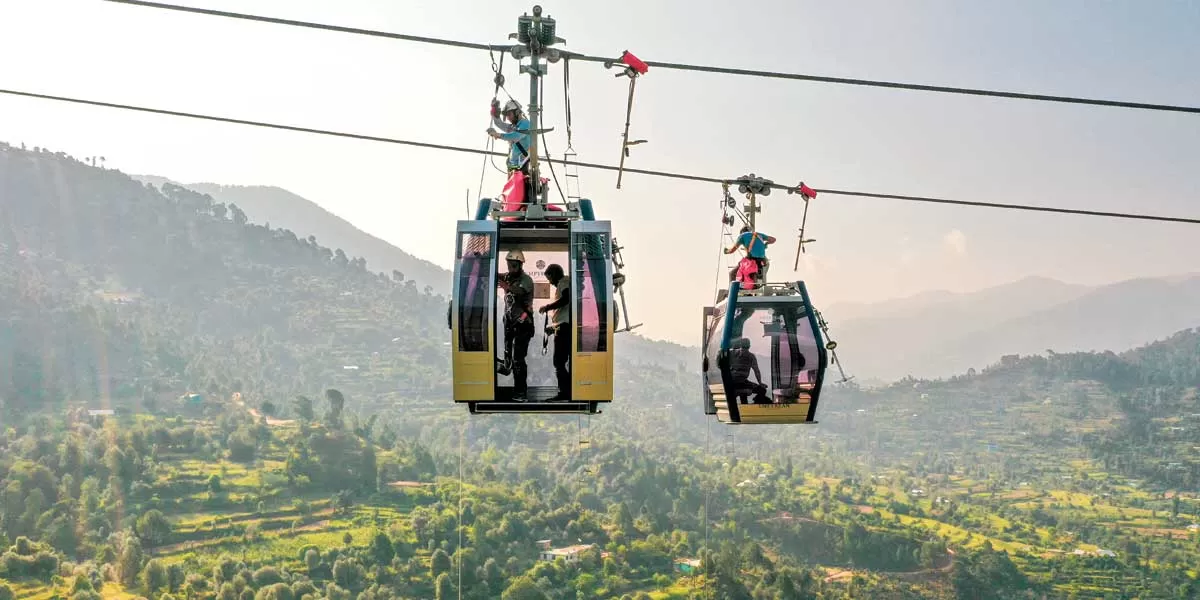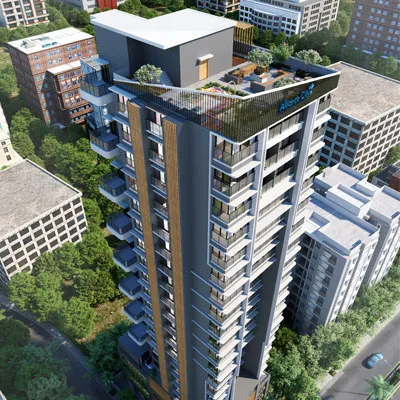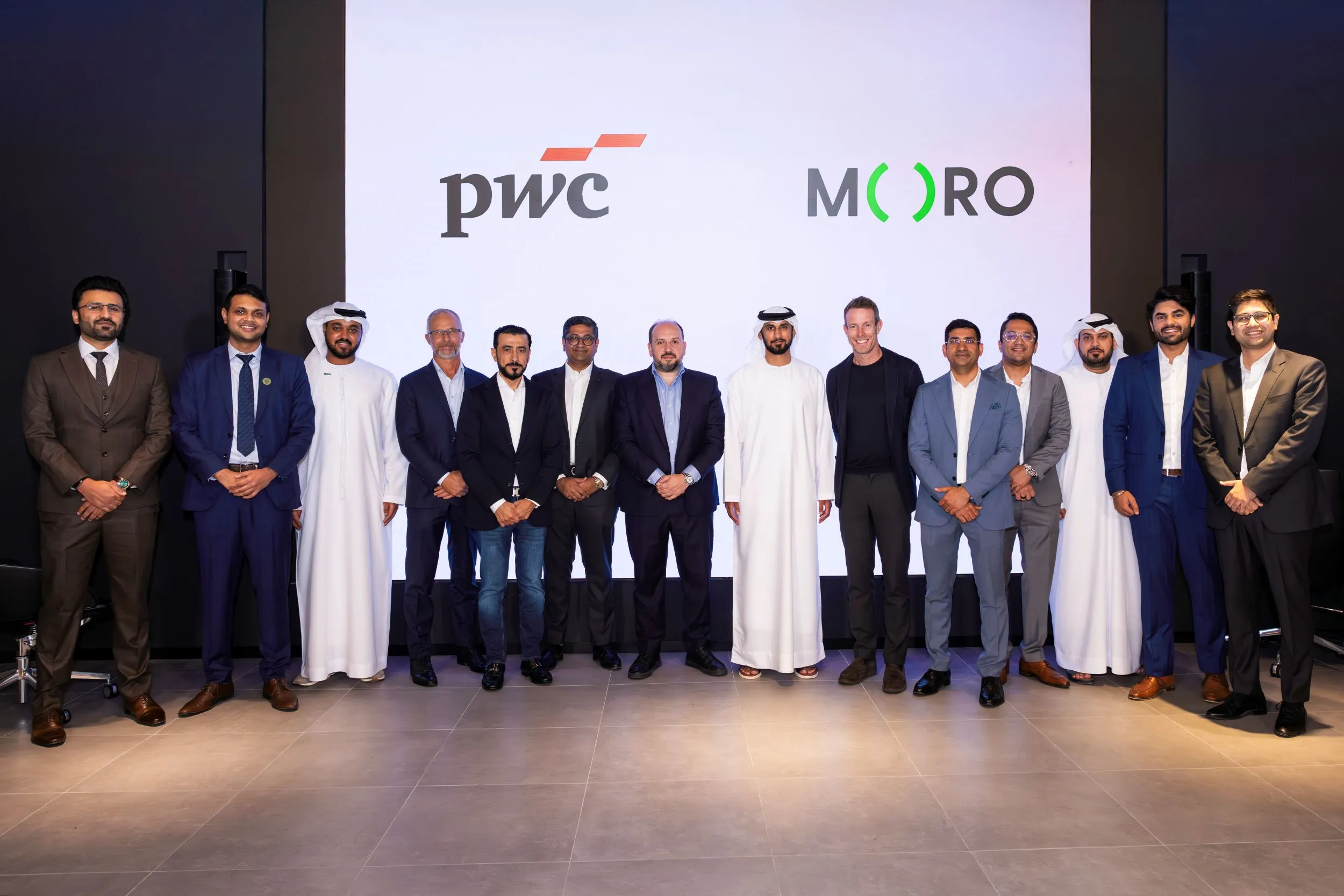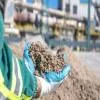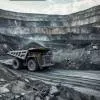Soaring over treetops, cable
cars or ropeways offer a captivating bird’s eye view of the enthralling landscape. Over the years, they have proved to be sustainable
and time-saving modes of transport that connect some of the most remote regions of the country, especially in mountains.
India embarked on the passenger ropeway journey in the 1960s. Since then, the ropeway segment has expanded and come up at many tourist and religious locations. A ropeway trip for many is a once-in-a-lifetime opportunity but for builders, it is a responsibility as every single hitch needs to be taken into consideration to ensure passenger safety. There have been instances and concerns have been raised over its safety standards. Recently, following the rescue operations in Jharkhand's Trikut hills after cable cars collided midair, the Ministry of Home Affairs (MHA) highlighted the need for standard operating procedures (SoPs) to be adopted while operating ropeways to prevent such instances.
R SRINIVASAN spoke to Junaid Altaf, Group Executive Director, FIL Industries, to learn more
about the Skyview by Empyrean project, which is located near Jammu, and safety aspects of ropeways. Excerpts:
Kindly elaborate upon the cost to set up such a project and the annual project maintenance cost.
Building India’s first Responsible Tourism Society of India (RTSOI) certified destination and one of the largest Indo-French mountain-tourism projects involved a total construction cost of Rs.1.75 billion; the annual cost of maintaining it is almost Rs.120 million.
What are the materials (steel, wood) and quantities used for each ropeway cabin?
Each aerial ropeway cabin weighs 1,388 kg with a composition reflecting a meticulous blend of materials. It consists of 60 per cent galvanised iron, imparting robustness to its structure, complemented by 30 per cent aluminium, which provides the ideal balance of strength and lightness. The remaining 10 per cent comprises a combination of polycarbonate glass, plastic and rubber, contributing to the cabin's functionality and aesthetics. This thoughtful composition underscores the engineering precision involved in crafting a well-balanced and durable ropeway cabin structure.
At what intervals is a systematic routine maintenance and inspection schedule carried out?
In the dynamic realm of ropeway operations, maintaining peak efficiency and safety is paramount. To achieve this, a meticulous and systematic routine maintenance schedule is adhered to, addressing every facet of the ropeway's intricate equipment on various intervals –daily, weekly, monthly, bimonthly, quarterly, semi-annually and annually. In addition, specific attention is given to maintenance schedules based on running hours, with intervals set at 1,000, 1,200, 1,500, 2,000 and 3,000 hours respectively. Here are the maintenance details:
Drive shaft maintenance: Lubrication is scheduled every three months or after 1,000 hours of operation. General inspection is conducted every three months.
Hydraulics oversight: Daily hydraulic fluid level checks are meticulously assessed to guarantee consistent performance. A comprehensive annual hydraulic fluid testing is conducted to maintain fluid quality. Pressure checking of the accumulator is scheduled every 1.5 years to ensure system stability. A periodic hydraulic fluid change is scheduled every 10 years for sustained efficiency.
Gear box vigilance: Daily oil level checks are conducted to monitor and maintain appropriate oil levels. Daily temperature checks prevent overheating. A thorough yearly gear box oil sample test assesses oil quality. Oil changes are scheduled every three years for sustained lubrication efficacy.
General inspection: A routine inspection is carried out every three months to promptly identify and address any potential issues.
Skyview by Empyrean’s robust maintenance framework exemplifies a commitment to the longevity, reliability and safety of the ropeway system. By implementing these proactive measures, we ensure each component operates at peak performance, mitigating risks and enhancing the overall ropeway efficiency, thus contributing to a more reliable ropeway experience.
As it works on electricity, how is it insulated in case of an emergency? Also what are the means for emergency evacuation?
The ropeway operates solely on electricity, ensuring zero carbon emissions. In the event of electricity failure, a meticulously maintained 810 kVA DG backup system seamlessly supplies power to the ropeway. Along with the 530-kW main motor, a 90-kW standby motor ensures uninterrupted operation during power failure. This emergency motor is supported by its dedicated 220 kVA separate DG system. Skyview by Empyrean adheres to global safety standards, which includes depending on a world-class emergency evacuation process. We have implemented a CEN standard rescue system supplied by the globally renowned Game System, which can be used for horizontal and vertical evacuation. The entire ropeway team is well-versed with the rescue evacuation system and regularly conducts mock rescue drills.
Please mention safety measures to prevent oscillation of cabins, power failure, midair collisions, avalanches, flood, soil erosion, earthquakes, landslides, etc?
Cutting-edge inductive sensors: The ropeway stations feature cutting-edge inductive sensors that meticulously track cabin movements within the station, maintaining a precise distance of 340 m during garage-out operations. This ensures a seamless and controlled operation of the system.
Superior cabin grips: The cabin grips are engineered to withstand forces up to 1,734 daN, eliminating the risk of midair collisions between
cabins. This robust design contributes to the overall safety and reliability of the aerial ropeway system.
Tower-based safety sensor: The ropeway towers feature state-of-the-art safety equipment designed to continuously monitor the condition of both cabins and ropes. These sophisticated systems guarantee the safe passage of cabins through the towers, ensuring an added layer of security throughout the journey.
Strategic installation of specialised equipment: Rope catchers, brittle bars and other specialised equipment have been installed to prevent any potential rope derailment, effectively minimising risks. Complementing these measures, wire cutters detect dangerous oscillations of cabins, ensuring stable and secure operation of the ropeway system.
Proactive anemometers: In locations with elevated tower heights and high wind speeds, anemometers provide real-time wind speed values. If wind speeds surpass a predetermined threshold, the ropeway's running speed is reduced and if it exceeds 15 m/s, the ropeway comes to a complete stop. This proactive measure prioritises passenger safety during adverse weather conditions.
Earthquake-resistant stations and towers: Skyview by Empyrean’s ropeway stations and tower foundations are meticulously designed to adhere to seismic zone 5 specifications, ensuring earthquake resistance. This strategic construction approach safeguards integrity of the entire ropeway infrastructure during seismic events.
Fortifying retaining walls: To mitigate the risk of landslides and erosion, all tower and station foundation areas are fortified with retaining walls and landscape stabilising methods. This eliminates ismic zone 5 specifications, ensuring earthquake resistance. This strategic construction approach safeguards integrity of the entire ropeway infrastructure during seismic events.
Fortifying retaining walls: To mitigate the risk of landslides and erosion, all tower and station foundation areas are fortified with retaining walls and landscape stabilising methods. This eliminates the the likelihood of occurrences, enhancing the safety and longevity of the ropeway system.
The ropeway system, with these advanced safety measures ensures smooth operations and prioritises passenger safety under various environmental conditions,
making it a dependable mode
of transportation.
